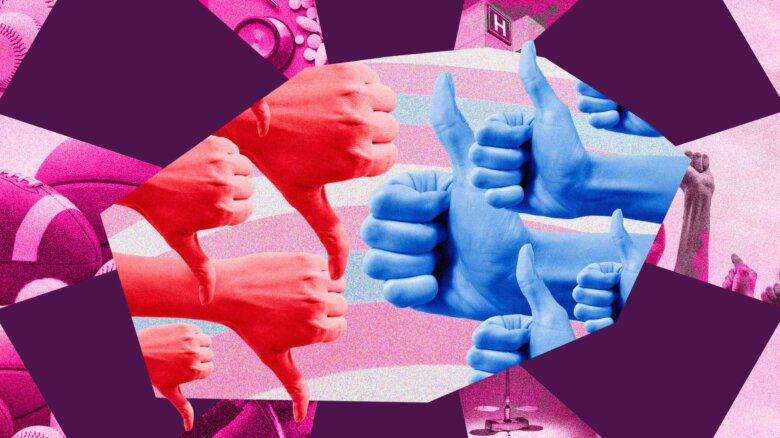Last December, Jim Flaherty, Ontario’s attorney-general of the day, introduced a bill asserting “that prostitution involving children and youth [should] be defined as commercialized child sexual abuse” and “that children and youth involved in prostitution [should] be treated as victims of sexual abuse.”
And the police or Children’s Aid Society workers can arrest and jail any youth under 18 for up to 30 days – just on the suspicion that they will engage in sex work.
The bill, in its newest form called Bill 86, An Act To Rescue Children Trapped In the Misery Of Prostitution And Other Forms Of Sexual Exploitation, is becoming law with little debate – or resistance.
Although considerable doubt has been expressed about this approach by many who work in the field, both opposition parties have said they’ll support it.
The New Democrats clearly don’t want to be against “protecting children” and the Liberals supported a similar private member’s bill (disingenuously titled An Act To Protect Children Involved In Prostitution) initiated by one of their own, Sudbury MPP Rick Bartolucci, which was a model for Bill 86.
Mostly it will become law, however, because a law which promises to protect child prostitutes by arresting them is perfect for a rightwing government. It is consistent with law-and-order values, while taking a moral but apparently compassionate stance toward exploited youth (which is why Alberta passed a similar law in 1999).
This kind of legislation is always popular. But is it a good idea? Will this it protect children from sexual exploitation? Will detention for 30 days, or even five, “assist the child to end his or her sexual exploitation”?
The answer is, at best, maybe.
Some youth will benefit and it will funnel some much needed resources to the street workers and agencies who might make a difference.
Some youth will not benefit – and it will further traumatize, stigmatize and label some very vulnerable kids.
What is certain, is that bill will advance the smoke and mirrors quality of recent criminal law reforms. That talk has effectively diverted dollars and attention away from the thorny causes of crime, while effectively demonizing their effects. It rests on the same series of dubious assumptions that have driven most recent law and order campaigns. That is, that there is some unprecedented crisis out there (fill in your favourite) that was facilitated – if not caused – by failed liberal notions from the (Godless) past; that the current system cannot solve it because the system is broken and is failing to keep us; and finally, that it will take tough measures to resolve, which do not include throwing hard earned tax payers dollars at it.
Bill 86 fits perfectly into this scheme. The proposition driving this authoritarian form is that there’s a crisis that cannot be resolved by existing means (“tools” in the current jargon). That is, police and social workers need better and more effective (that is, authoritarian) tools to protect our children from new dangers.
When he brought in the bill, Jim Flaherty (having claimed that most prostitutes enter the trade at 13) said: “Unfortunately, in small and large communities across Ontario, children 13 to 18 years of age are forced to become and stay prostitutes. Their stories are heart-wrenching. Many are runaways. However, running to the streets comes with many hazards: predators such as pimps and johns, regular beatings, and drugs.”
There is some validity to that picture – along with much distortion and hyperbole. There are some very young people being exploited in the sex trade. There are some very young people being abused and suffering from substance abuse. And it is certainly the case that some police, youth workers, teachers and parents, have become convinced that the short-term pain of arrest and detention is justified by the long-term gain.
But the truth is that, even judged on its own terms, the bill is a bad solution to an issue that was deliberately manufactured into a crisis.
Without even getting into the problem that the data on how many children are at risk in this way is contested and ambiguous, this legislation’s claim to protect children is wildly exaggerated.
It doesn’t address the reasons kids run to the street and most definitely doesn’t deal with the reason that when they do, more kids than before are harmed when they get there. While both prostitution and the exploitation of children have long been with us, the numbers of homeless street youth vulnerable to that exploitation are a product of deliberate government and corporate strategies, both recent and historic.
The strategies that have generated unprecedented disparities between rich and poor have consequences – and we see those consequences sleeping under bridges, begging on the street and selling their bodies every day. The arrest and detain tactic ignores the recent history of failure and worse when similar approaches placed sexually exploited and street-involved youth into institutions like Grandview Training School for Girls or St John’s Training School For Boys – failed strategies we are still paying for. And it simply assumes that sex is different. Runaways who are defined as beggars and squeegee kids are demonized as young offenders and are only to be pitied as victims when their exploitation is sexual.
It should be no surprise that a significant number of these runaways and drop outs turn to, or are captured by, street prostitution, occasionally at least, while they juggle part-time minimum-wage jobs, panhandle, wash windshields, engage in crime – or worse. For some, the reasons to leave home are so serious that life on or nearly on the street with all its dangers and degradation is an improvement. For others, whose reasons do not stand up to comparison with life on the street, the route home is much longer if drugs, prostitution or crime have intervened.
The truth is that laws like Bill 86 are not designed to actually address a real problem – they are drafted, brand-named and marketed to serve a political goal. At its root, this is a punitive law, designed to remove from city streets the unsettling sight of very young people working as prostitutes while purporting to resolve a phony crisis.
Child welfare law, and child welfare workers were already in place in Ontario to protect children – but these statutes and these agencies have been discredited and were not utilized to protect youthful prostitutes. Instead “new” legislation was produced and the “new” solution of arrest and detention was announced.
But no real solutions are included – no education, jobs, respect or treatment. Of course, real solutions were not the point – this is about politics and its marketing.
In Alberta where a similar law was first enacted, and now in Ontario, the eroticized and titillating stories of “fallen” girls wobbling on high heels while clutching teddy bears are told and retold and offered as incontrovertible proof that a crisis exists – and that governments care.
Male youth, in contrast, but with equal flair, are demonized; their squeegees described as weapons; their sexual exploitation invisible. The solutions provided for both – punitive coercive mechanism with social welfare overtones for the child (read girl) prostitute, and harsh anti-begging laws for the others, are simply smoke and mirrors.
* Dianne L Martin is an associate professor at Osgoode Hall Law School. This article draws on research funded by the Social Sciences And Humanities Research Council (SSHRC) in a project titled Feminism, Law And The Challenge Of Privatization.

 Why you can trust Xtra
Why you can trust Xtra


